Moves for Your Biceps
Last updated on December 01, 2024 by Fitness Goal 4U
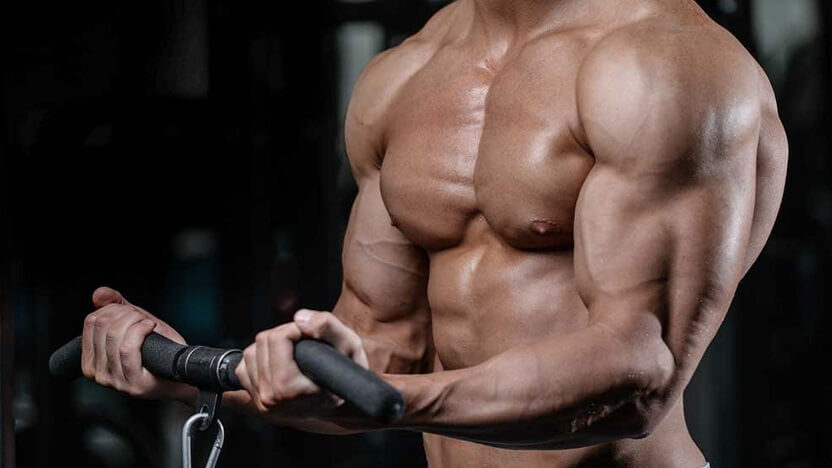
“The real workout starts when you want to stop.” – Ronnie Coleman
Biceps workouts are a crucial component of any comprehensive strength training routine, targeting the biceps brachii, brachialis, and brachioradialis muscles to enhance arm size, strength, and definition. Whether you're a beginner or an experienced lifter, focusing on the biceps not only improves the aesthetics of your arms but also supports functional strength for everyday activities and other compound movements. A well-rounded biceps workout involves a combination of compound exercises, like chin-ups and rows, which engage multiple muscle groups, and isolation exercises, such as barbell curls, dumbbell curls, and hammer curls, to specifically target the biceps. Proper form, controlled movements, and a full range of motion are essential to maximize muscle engagement and prevent injury. Additionally, varying your exercises, grips, and angles can help target different parts of the biceps for balanced development. Consistency, along with proper nutrition and recovery, is key to achieving noticeable results in biceps strength and definition.
Best 10 Biceps Workout
1. Standing Barbell Curl
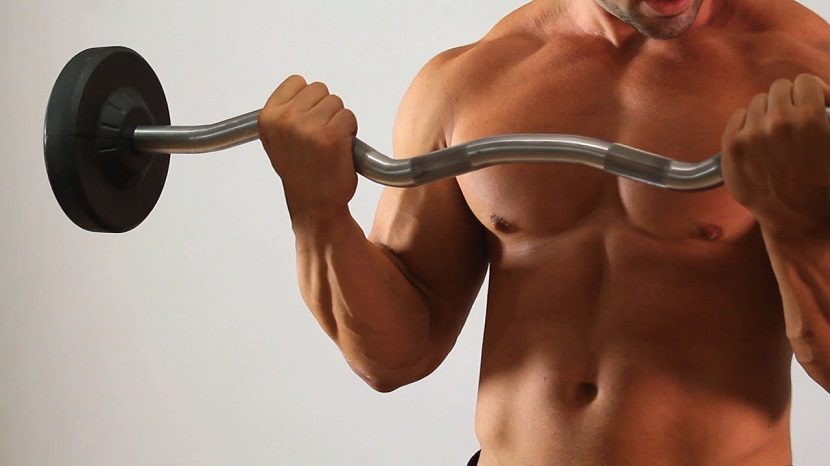
The standing barbell curl is a fundamental exercise that primarily targets the biceps brachii. It is a staple in many strength training routines due to its simplicity and effectiveness in building biceps size and strength.
How to Do It
1. Setup:
- Stand with your feet shoulder-width apart.
- Hold a barbell with an underhand grip (palms facing up), hands positioned shoulder-width apart.
- Let your arms hang down fully extended in front of you, with the barbell at thigh level.
2. Execution:
- Start the movement by contracting your biceps to curl the barbell upward.
- Keep your elbows stationary and close to your torso throughout the entire movement.
- Continue curling the barbell until it reaches shoulder level, fully contracting your biceps at the top.
- Pause briefly at the top of the movement.
- Slowly lower the barbell back to the starting position in a controlled manner.
3. Breathing:
- Exhale as you curl the barbell upwards.
- Inhale as you lower the barbell back down.
Tips and Tricks
- Elbow Position: Ensure your elbows remain fixed and close to your sides to prevent them from drifting forward or backward. This helps isolate the biceps.
- Controlled Movement: Focus on a slow and controlled movement to maximize muscle engagement and avoid using momentum. This will enhance the effectiveness of the exercise.
- Grip Width: Adjust your grip width to what feels comfortable for your wrists and shoulders. A shoulder-width grip is standard, but you can experiment with a slightly narrower or wider grip to target different parts of the biceps.
- Avoid Swinging: Do not use your back or shoulders to help lift the barbell. Keep the movement isolated to your biceps for better muscle activation.
- Full Range of Motion: Ensure you use a full range of motion, fully extending your arms at the bottom and fully contracting your biceps at the top.
- Weight Selection: Choose a weight that allows you to perform the exercise with proper form. As you progress, gradually increase the weight to continue challenging your muscles.
- Consistent Practice: Incorporate this exercise into your regular biceps routine to build strength and muscle over time.
2. Dumbbell Curl
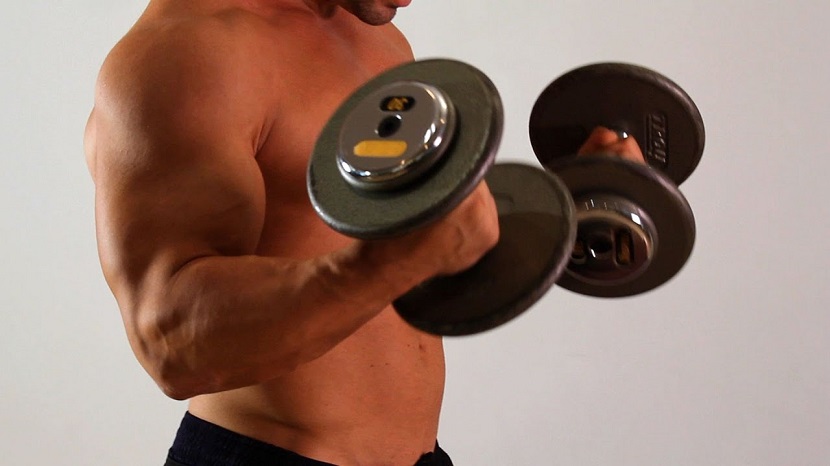
The dumbbell curl is a fundamental exercise that isolates each bicep, promoting balanced muscle development and strength. It is versatile and can be performed in various positions, including standing or seated.
How to Do It
1. Setup
- Stand or sit with a dumbbell in each hand.
- Allow your arms to hang at your sides with your palms facing forward.
- Keep your feet shoulder-width apart if standing.
2. Execution
- Begin by contracting your biceps to curl the dumbbells upwards.
- Keep your elbows stationary and close to your torso.
- Curl the dumbbells simultaneously or alternately towards your shoulders.
- Continue curling until the dumbbells are at shoulder level, fully contracting your biceps at the top.
- Pause briefly at the top of the movement.
- Slowly lower the dumbbells back to the starting position in a controlled manner.
3. Breathing
- Exhale as you curl the dumbbells upwards.
- Inhale as you lower the dumbbells back down.
Tips and Tricks
- Elbow Position: Ensure your elbows remain fixed and close to your sides. This helps focus the work on your biceps and reduces the involvement of other muscles.
- Controlled Movement: Use a slow, controlled motion to maximize muscle engagement and avoid using momentum. This enhances the effectiveness of the exercise.
- Full Range of Motion: Use a full range of motion, fully extending your arms at the bottom and fully contracting your biceps at the top.
- Avoid Swinging: Do not use your back or shoulders to help lift the dumbbells. Keep the movement isolated to your biceps for better muscle activation.
- Grip Variation: You can vary your grip (neutral, supinated, or pronated) to target different parts of the biceps and forearms.
- Weight Selection: Choose a weight that allows you to perform the exercise with proper form. As you progress, gradually increase the weight to continue challenging your muscles.
- Consistent Practice: Incorporate this exercise into your regular biceps routine to build strength and muscle over time.
3. Hammer Curl
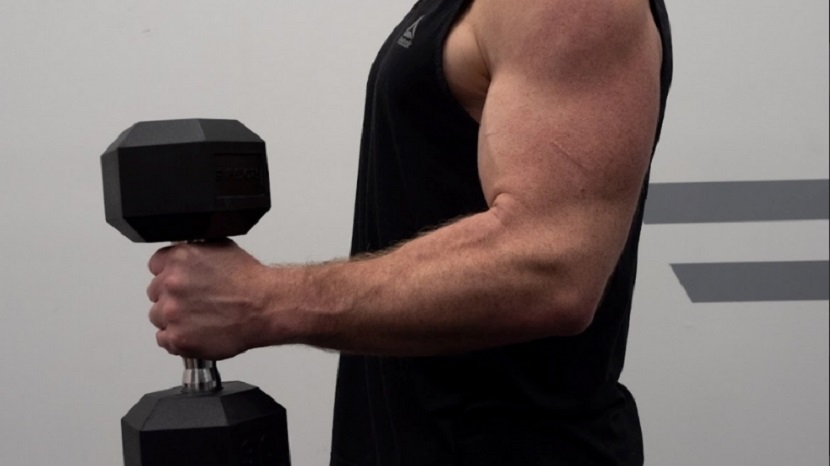
The hammer curl is an effective biceps exercise that targets the brachialis and brachioradialis muscles in addition to the biceps brachii. It uses a neutral grip (palms facing each other), which can be easier on the wrists and helps in building arm strength and size.
How to Do It
1. Setup
- Stand with your feet shoulder-width apart.
- Hold a dumbbell in each hand with a neutral grip (palms facing your body).
- Allow your arms to hang at your sides.
2. Execution
- Begin by curling the dumbbells upwards while keeping your palms facing each other.
- Keep your elbows stationary and close to your torso throughout the movement.
- Continue curling until the dumbbells are at shoulder level, fully contracting your biceps at the top.
- Pause briefly at the top of the movement.
- Slowly lower the dumbbells back to the starting position in a controlled manner.
3. Breathing
- Exhale as you curl the dumbbells upwards.
- Inhale as you lower the dumbbells back down.
Tips and Tricks
- Elbow Position: Ensure your elbows remain fixed and close to your sides to keep the focus on your biceps and brachialis muscles.
- Controlled Movement: Use a slow and controlled motion to maximize muscle engagement and avoid using momentum. This enhances the effectiveness of the exercise.
- Full Range of Motion: Use a full range of motion, fully extending your arms at the bottom and fully contracting your biceps at the top.
- Avoid Swinging: Do not use your back or shoulders to help lift the dumbbells. Keep the movement isolated to your biceps for better muscle activation.
- Grip Consistency: Maintain a neutral grip throughout the exercise to target the intended muscles effectively.
- Weight Selection: Choose a weight that allows you to perform the exercise with proper form. As you progress, gradually increase the weight to continue challenging your muscles.
- Consistent Practice: Incorporate this exercise into your regular biceps routine to build strength and muscle over time.
4. Preacher Curl
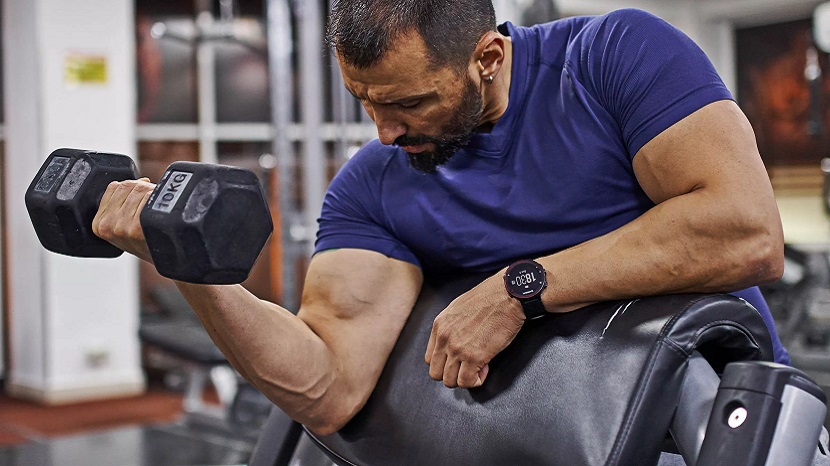
The preacher curl is an isolation exercise that targets the biceps brachii. It is performed on a preacher bench, which helps eliminate the involvement of other muscle groups, providing a more focused and intense bicep workout.
How to Do It
1. Setup
- Adjust the seat of the preacher bench so that when seated, your upper arms lie flat on the bench pad, and your chest is firmly against the bench.
- Hold a barbell or EZ curl bar with an underhand grip (palms facing up), hands positioned shoulder-width apart.
- Rest your upper arms on the preacher bench pad, allowing your arms to hang down fully extended.
2. Execution
- Begin by curling the bar towards your shoulders, contracting your biceps.
- Keep your upper arms firmly against the bench and your elbows stationary.
- Continue curling until the bar reaches shoulder level or just above the pad, fully contracting your biceps at the top.
- Pause briefly at the top of the movement.
- Slowly lower the bar back to the starting position in a controlled manner, fully extending your arms.
3. Breathing
- Exhale as you curl the bar upwards.
- Inhale as you lower the bar back down.
Tips and Tricks
- Elbow Position: Ensure your elbows remain fixed and close to your body, keeping them stationary against the bench pad. This helps focus the work on your biceps and reduces the involvement of other muscles.
- Controlled Movement: Use a slow and controlled motion to maximize muscle engagement and avoid using momentum. This enhances the effectiveness of the exercise.
- Full Range of Motion: Use a full range of motion, fully extending your arms at the bottom and fully contracting your biceps at the top.
- Avoid Overextending: Do not overextend your elbows at the bottom of the movement to prevent strain and potential injury.
- Grip Variation: You can use a narrow or wide grip on the bar to target different parts of the biceps. Experiment to find what feels best for you.
- Weight Selection: Choose a weight that allows you to perform the exercise with proper form. As you progress, gradually increase the weight to continue challenging your muscles.
- Consistent Practice: Incorporate this exercise into your regular biceps routine to build strength and muscle over time.
5. Concentration Curl
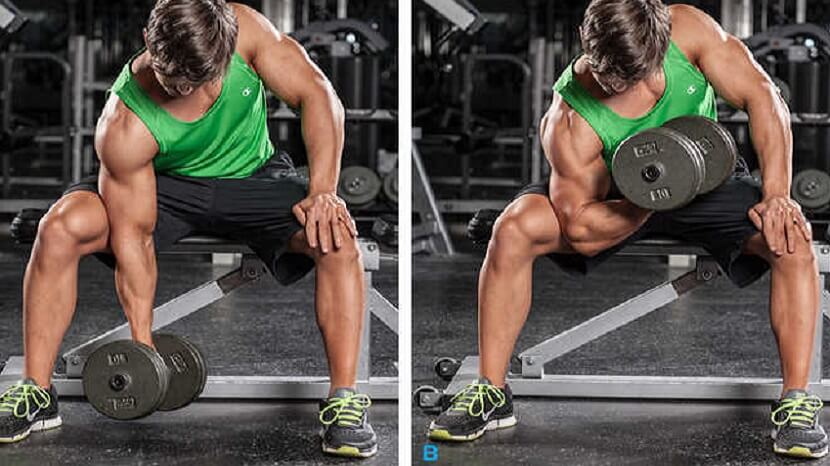
The concentration curl is a highly effective isolation exercise that targets the biceps brachii. It emphasizes the peak contraction of the biceps, helping to build size and definition. This exercise is performed one arm at a time, allowing for focused attention on each bicep.
How to Do It
1. Setup
- Sit on a bench with your legs spread, your feet flat on the floor.
- Hold a dumbbell in one hand, with your palm facing up.
- Lean forward slightly and rest the back of your upper arm against the inside of your thigh on the same side.
- Your arm should be fully extended with the dumbbell just above the floor.
2. Execution
- Begin by curling the dumbbell upwards towards your shoulder, keeping the back of your upper arm against your thigh.
- Focus on squeezing your bicep as you lift the weight.
- Continue curling until the dumbbell reaches shoulder level, fully contracting your bicep at the top.
- Pause briefly at the top of the movement.
- Slowly lower the dumbbell back to the starting position in a controlled manner, fully extending your arm.
3. Breathing
- Exhale as you curl the dumbbell upwards.
- Inhale as you lower the dumbbell back down.
Tips and Tricks
- Elbow Position: Ensure your elbow remains fixed against your thigh throughout the exercise to maintain isolation of the bicep.
- Controlled Movement: Use a slow and controlled motion to maximize muscle engagement and avoid using momentum. This enhances the effectiveness of the exercise.
- Full Range of Motion: Use a full range of motion, fully extending your arm at the bottom and fully contracting your bicep at the top.
- Avoid Swinging: Do not use your body to help lift the dumbbell. Keep the movement isolated to your bicep for better muscle activation.
- Focus on Contraction: Concentrate on squeezing your bicep at the top of the movement for maximum muscle engagement.
- Weight Selection: Choose a weight that allows you to perform the exercise with proper form. As you progress, gradually increase the weight to continue challenging your muscles.
- Consistent Practice: Incorporate this exercise into your regular biceps routine to build strength and muscle over time.
- Alternate Arms: Perform the exercise for one arm, then switch to the other arm to ensure balanced development.
6. Cable Curl
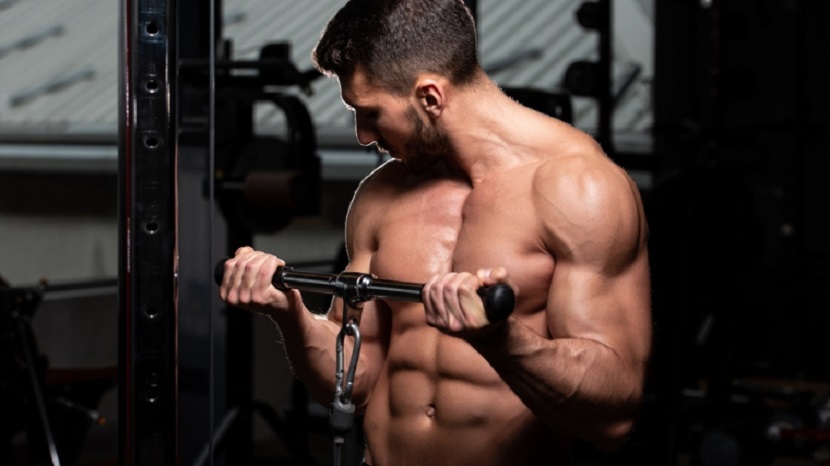
The cable curl is an isolation exercise that targets the biceps brachii using a cable machine. The constant tension provided by the cable offers a unique challenge compared to free weights, ensuring continuous muscle engagement throughout the entire range of motion.
How to Do It
1. Setup
- Attach a straight bar or an EZ-curl bar to a low pulley on a cable machine.
- Stand facing the machine, with feet shoulder-width apart.
- Grasp the bar with an underhand grip (palms facing up), hands positioned shoulder-width apart.
- Stand close enough to the machine so the cable remains taut when your arms are fully extended.
2. Execution
- Begin by curling the bar upwards towards your shoulders, keeping your elbows stationary and close to your torso.
- Focus on contracting your biceps as you lift the weight.
- Continue curling until the bar is at shoulder level, fully contracting your biceps at the top.
- Pause briefly at the top of the movement.
- Slowly lower the bar back to the starting position in a controlled manner, fully extending your arms.
3. Breathing
- Exhale as you curl the bar upwards.
- Inhale as you lower the bar back down.
Tips and Tricks
- Elbow Position: Keep your elbows fixed and close to your sides throughout the exercise to maintain isolation of the biceps.
- Controlled Movement: Use a slow and controlled motion to maximize muscle engagement and avoid using momentum. This enhances the effectiveness of the exercise.
- Full Range of Motion: Use a full range of motion, fully extending your arms at the bottom and fully contracting your biceps at the top.
- Avoid Leaning: Do not lean back or use your body to help lift the weight. Keep the movement isolated to your biceps for better muscle activation.
- Grip Variation: Experiment with different attachments and grips (e.g., rope attachment, narrow or wide grip) to target different parts of the biceps and forearms.
- Cable Height: Adjust the height of the pulley to target different angles of resistance. A lower pulley position is standard, but you can try different heights to vary the exercise.
- Weight Selection: Choose a weight that allows you to perform the exercise with proper form. As you progress, gradually increase the weight to continue challenging your muscles.
- Consistent Practice: Incorporate this exercise into your regular biceps routine to build strength and muscle over time.
7. Incline Dumbbell Curl
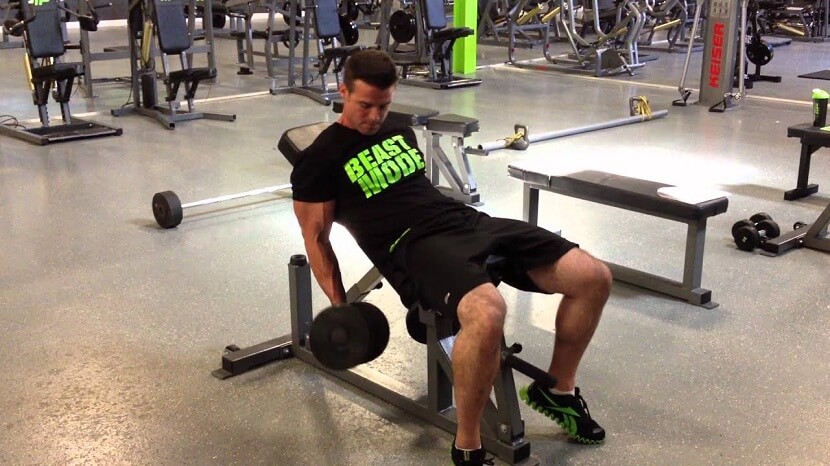
The incline dumbbell curl is an isolation exercise that targets the biceps brachii, particularly emphasizing the long head of the biceps. By performing this exercise on an incline bench, you increase the stretch on the biceps, which can lead to greater muscle activation and growth.
How to Do It
1. Setup
- Set an adjustable bench to an incline angle of about 45 degrees.
- Sit on the bench with your back firmly against the pad.
- Hold a dumbbell in each hand with an underhand grip (palms facing up).
- Let your arms hang straight down, fully extended.
2. Execution
- Begin by curling the dumbbells upwards towards your shoulders, keeping your elbows stationary and close to your torso.
- Focus on contracting your biceps as you lift the weights.
- Continue curling until the dumbbells are at shoulder level, fully contracting your biceps at the top.
- Pause briefly at the top of the movement.
- Slowly lower the dumbbells back to the starting position in a controlled manner, fully extending your arms.
3. Breathing
- Exhale as you curl the dumbbells upwards.
- Inhale as you lower the dumbbells back down.
Tips and Tricks:
- Elbow Position: Keep your elbows fixed and close to your sides throughout the exercise to maintain isolation of the biceps.
- Controlled Movement: Use a slow and controlled motion to maximize muscle engagement and avoid using momentum. This enhances the effectiveness of the exercise.
- Full Range of Motion: Use a full range of motion, fully extending your arms at the bottom and fully contracting your biceps at the top.
- Avoid Swinging: Do not use your back or shoulders to help lift the dumbbells. Keep the movement isolated to your biceps for better muscle activation.
- Bench Angle: Adjust the incline angle to vary the stretch and challenge on the biceps. A lower angle increases the stretch, while a higher angle reduces it.
- Grip Variation: You can vary your grip (e.g., neutral grip) to target different parts of the biceps and forearms.
- Weight Selection: Choose a weight that allows you to perform the exercise with proper form. As you progress, gradually increase the weight to continue challenging your muscles.
- Consistent Practice: Incorporate this exercise into your regular biceps routine to build strength and muscle over time.
8. Spider Curl
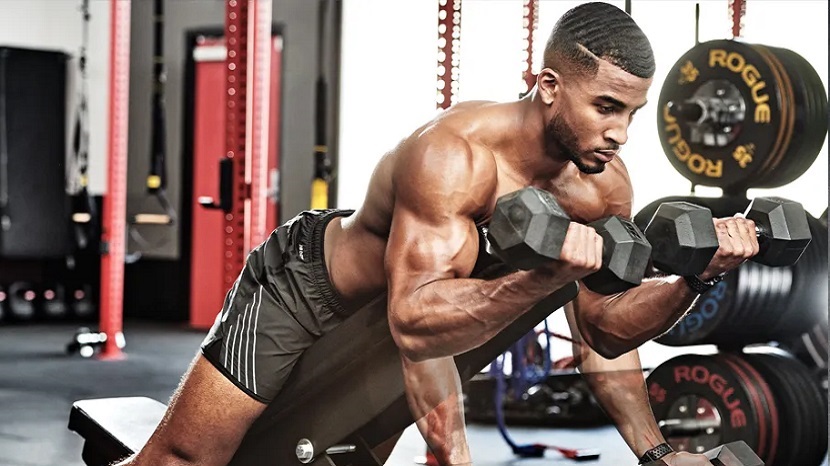
The spider curl is an isolation exercise that targets the biceps brachii, particularly emphasizing the peak contraction of the biceps. Performed on an incline bench, it eliminates the use of momentum and other muscle groups, providing a highly focused biceps workout.
How to Do It
1. Setup
- Adjust an incline bench to a 45-degree angle.
- Lie face down on the bench with your chest and stomach against the pad, and your feet firmly planted on the floor.
- Hold a dumbbell in each hand with an underhand grip (palms facing up), letting your arms hang straight down towards the floor.
2. Execution
- Begin by curling the dumbbells upwards towards your shoulders, keeping your elbows stationary and close to your torso.
- Focus on contracting your biceps as you lift the weights.
- Continue curling until the dumbbells are at shoulder level, fully contracting your biceps at the top.
- Pause briefly at the top of the movement.
- Slowly lower the dumbbells back to the starting position in a controlled manner, fully extending your arms.
3. Breathing
- Exhale as you curl the dumbbells upwards.
- Inhale as you lower the dumbbells back down.
Tips and Tricks
- Elbow Position: Keep your elbows fixed and stationary throughout the exercise to maintain isolation of the biceps.
- Controlled Movement: Use a slow and controlled motion to maximize muscle engagement and avoid using momentum. This enhances the effectiveness of the exercise.
- Full Range of Motion: Use a full range of motion, fully extending your arms at the bottom and fully contracting your biceps at the top.
- Avoid Swinging: Do not use your back or shoulders to help lift the dumbbells. Keep the movement isolated to your biceps for better muscle activation.
- Grip Variation: You can vary your grip (e.g., neutral grip) to target different parts of the biceps and forearms.
- Weight Selection: Choose a weight that allows you to perform the exercise with proper form. As you progress, gradually increase the weight to continue challenging your muscles.
- Bench Angle: Ensure the bench is set at an appropriate angle to prevent discomfort and to keep the focus on the biceps.
- Consistent Practice: Incorporate this exercise into your regular biceps routine to build strength and muscle over time.
9. Zottman Curl
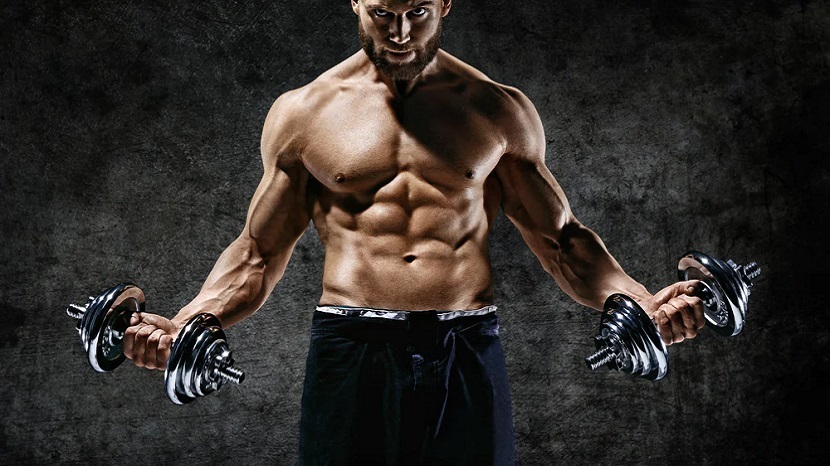
The Zottman curl is a unique and effective exercise that targets both the biceps and the forearms. By combining a regular curl with a reverse curl, it maximizes muscle engagement in the biceps brachii, brachialis, and brachioradialis, promoting balanced arm development.
How to Do It
1. Setup
- Stand with your feet shoulder-width apart.
- Hold a dumbbell in each hand with an underhand grip (palms facing up), hands positioned shoulder-width apart.
- Let your arms hang straight down at your sides.
2. Execution
- Begin by curling the dumbbells upwards towards your shoulders, keeping your elbows stationary and close to your torso.
- Focus on contracting your biceps as you lift the weights.
- Once the dumbbells are at shoulder level, pause briefly and rotate your wrists so your palms are facing down (overhand grip).
- Slowly lower the dumbbells back to the starting position with the overhand grip, fully extending your arms.
- Rotate your wrists back to the underhand grip at the bottom to start the next repetition.
3. Breathing
- Exhale as you curl the dumbbells upwards.
- Inhale as you lower the dumbbells back down.
Tips and Tricks
- Elbow Position: Keep your elbows fixed and close to your sides throughout the exercise to maintain isolation of the biceps and forearms.
- Controlled Movement: Use a slow and controlled motion to maximize muscle engagement and avoid using momentum. This enhances the effectiveness of the exercise, particularly during the lowering phase with the overhand grip.
- Full Range of Motion: Use a full range of motion, fully extending your arms at the bottom and fully contracting your biceps at the top.
- Wrist Rotation: Ensure smooth wrist rotation at the top of the movement to transition from the underhand to overhand grip. This helps target the forearms effectively.
- Avoid Swinging: Do not use your back or shoulders to help lift the dumbbells. Keep the movement isolated to your arms for better muscle activation.
- Weight Selection: Choose a weight that allows you to perform the exercise with proper form. As you progress, gradually increase the weight to continue challenging your muscles.
- Balanced Development: Incorporate the Zottman curl into your regular arm routine to ensure balanced development of the biceps and forearms.
- Consistent Practice: Regularly include this exercise in your workouts to build strength and muscle over time.
10. Chin-Up

The chin-up is a powerful bodyweight exercise that primarily targets the biceps brachii and the latissimus dorsi (lats). It also engages the shoulders, forearms, and core, making it an excellent compound movement for overall upper body strength and development.
How to Do It
1. Setup
- Find a pull-up bar and stand directly below it.
- Grip the bar with an underhand grip (palms facing you), hands positioned shoulder-width apart.
- Hang from the bar with your arms fully extended and your legs slightly bent at the knees or crossed at the ankles.
2. Execution
- Begin by pulling your body upwards towards the bar by bending your elbows and engaging your biceps and lats.
- Keep your elbows close to your body as you lift.
- Continue pulling until your chin is above the bar, fully contracting your biceps at the top.
- Pause briefly at the top of the movement.
- Slowly lower your body back to the starting position in a controlled manner, fully extending your arms.
3. Breathing
- Exhale as you pull your body upwards.
- Inhale as you lower your body back down.
Tips and Tricks
- Grip: Ensure a firm grip on the bar to prevent slipping and to maximize control throughout the movement.
- Elbow Position: Keep your elbows close to your body to maintain focus on the biceps and lats.
- Controlled Movement: Use a slow and controlled motion, particularly on the way down, to maximize muscle engagement and avoid using momentum. This enhances the effectiveness of the exercise and reduces the risk of injury.
- Core Engagement: Engage your core throughout the movement to maintain stability and prevent swinging.
- Range of Motion: Use a full range of motion, fully extending your arms at the bottom and ensuring your chin is above the bar at the top.
- Avoid Kipping: Do not use your legs or momentum to help lift your body. Keep the movement strict to isolate the target muscles.
- Progression: If you are unable to perform a full chin-up, use resistance bands for assistance or perform negative chin-ups (focusing on the lowering phase) to build strength.
- Consistent Practice: Incorporate chin-ups into your regular workout routine to build strength and muscle over time.
FAQs (Frequently Asked Questions)
1. How often should I train my biceps?
Answer : It's generally recommended to train your biceps 2-3 times per week, allowing at least 48 hours of rest between sessions to ensure proper recovery and muscle growth.
2. What is the best exercise for biceps growth?
Answer : There isn't a single "best" exercise, as effective biceps growth comes from a combination of exercises. Key exercises include standing barbell curls, dumbbell curls, hammer curls, and chin-ups.
3. How many sets and reps should I do for biceps?
Answer : For hypertrophy (muscle growth), aim for 3-4 sets of 8-12 reps. For strength, you might do 4-6 sets of 4-6 reps. Adjust based on your goals and experience level.
4. Should I use heavy weights or lighter weights for biceps training?
Answer : Both heavy and light weights can be effective. Heavy weights with lower reps build strength, while lighter weights with higher reps build endurance and muscle definition. Incorporate a mix of both in your routine.
5. How can I avoid plateauing in my biceps training?
Answer : Vary your exercises, rep ranges, and weights regularly. Incorporate different angles, grips, and equipment to continuously challenge your muscles and promote growth.
6. Can I train my biceps every day?
Answer : Training biceps every day is not recommended as it can lead to overtraining, which hinders recovery and growth. Ensure adequate rest between workouts.
7. Is it necessary to use supplements for biceps growth?
Answer : Supplements can support your training but are not necessary for growth. Focus on a balanced diet rich in protein, carbs, and healthy fats. Supplements like protein powder or BCAAs can be beneficial if you have difficulty meeting your nutritional needs through food alone.
8. How long does it take to see results in biceps growth?
Answer : Visible results can vary based on genetics, diet, and consistency. Generally, you may start to see noticeable changes in 4-8 weeks with consistent training and proper nutrition.
9. Do I need to do different exercises for the short and long head of the biceps?
Answer : Yes, incorporating a variety of exercises that target different angles can help develop both the short and long head of the biceps. For example, incline curls emphasize the long head, while preacher curls target the short head.
10. Can I get big biceps just from compound exercises like pull-ups and rows?
Answer : Compound exercises like pull-ups and rows do work the biceps, but for maximum growth, it's beneficial to include isolation exercises that specifically target the biceps.
11. Should I train biceps on the same day as back or on a different day?
Answer : Training biceps on the same day as back can be efficient since many back exercises also work the biceps. However, if you prefer, you can train them on a separate day to focus more intensely on each muscle group.
12. How important is the mind-muscle connection in biceps training?
Answer : The mind-muscle connection is very important. Focusing on squeezing and contracting your biceps during each rep can significantly enhance muscle activation and growth.
13. Can women train biceps the same way as men?
Answer : Yes, women can and should train biceps in the same way as men. The principles of muscle growth and strength training apply equally to both genders.
14. Is it normal to experience soreness after biceps workouts?
Answer : Some soreness, known as delayed onset muscle soreness (DOMS), is normal, especially if you're new to training or have increased intensity. However, severe or persistent pain may indicate an injury.
15. How can I avoid wrist pain during biceps exercises?
Answer : Ensure proper form and grip during exercises. Using an EZ curl bar can reduce wrist strain compared to a straight bar. Additionally, incorporating wrist strengthening exercises and stretching can help.
16. Do I need to change my biceps workout routine regularly?
Answer : Yes, regularly changing your routine can prevent plateaus and continuously challenge your muscles. Consider changing exercises, rep ranges, and weights every 4-6 weeks.
17. Are machines or free weights better for biceps growth?
Answer : Both have their advantages. Free weights allow for a natural range of motion and require more stabilizer muscle activation, while machines provide consistent tension and can be safer for beginners. A mix of both can be beneficial.
18. How important is nutrition for biceps growth?
Answer : Nutrition is crucial. Consuming adequate protein, carbohydrates, and healthy fats supports muscle repair and growth. Hydration and sufficient calorie intake are also essential.
19. Can I use resistance bands for biceps training?
Answer : Yes, resistance bands can be an effective tool for biceps training, providing constant tension and a different type of resistance compared to free weights.
20. How can I ensure I’m using the correct form during biceps exercises?
Answer : Watching instructional videos, consulting with a trainer, or using a mirror to monitor your form can help ensure proper technique. Proper form minimizes the risk of injury and maximizes the effectiveness of your workouts.
Conclusion
Achieving well-defined and strong biceps requires consistency, proper technique, and variety. Incorporate a mix of compound and isolation exercises like barbell curls, dumbbell curls, hammer curls, preacher curls, and chin-ups. Focus on maintaining proper form, using controlled movements, and employing a full range of motion. Gradually increase weights to continue challenging your muscles. Ensure a balanced diet rich in protein, carbohydrates, and healthy fats to support muscle growth. Rest and recovery are equally important for optimal results. By following these principles, you'll see significant improvements in biceps size, strength, and definition. Stay consistent and dedicated to your training.
You might also like our weight loss articles.
If you would like more information about the Best 10 Biceps Workouts for Building Muscle 2024, please send us an email.
Written by Fitness Goal 4U
Smart Fitness Goals - Achieve Health with Simple Steps
Smart fitness goals focus on being Specific, Measurable, Achievable, Relevant, and Time-bound. They help you create a clear path to success, stay motivated, and track progress. Whether its weight loss, strength building, or improved endurance, smart goals guide your fitness journey, ensuring steady growth and sustainable results tailored to your needs.
“Its hard to beat a person who never gives up.” – Babe Ruth
